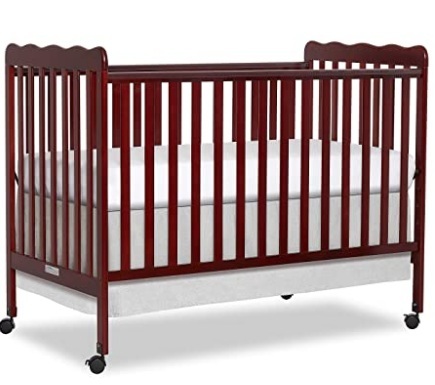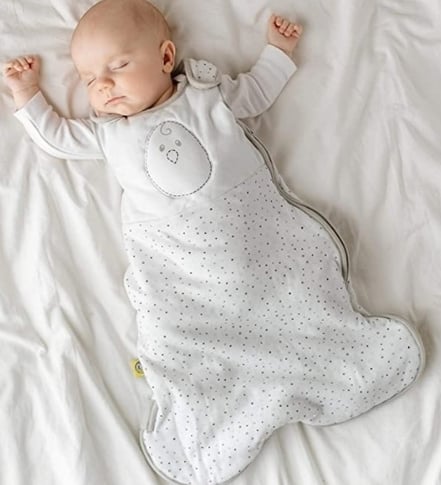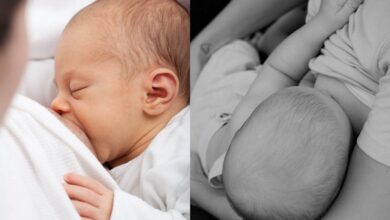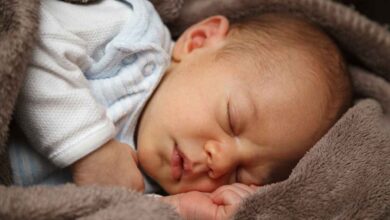How to Keep Baby’s Legs from Getting Stuck in Crib – 3 Easy Ways to Get It Done
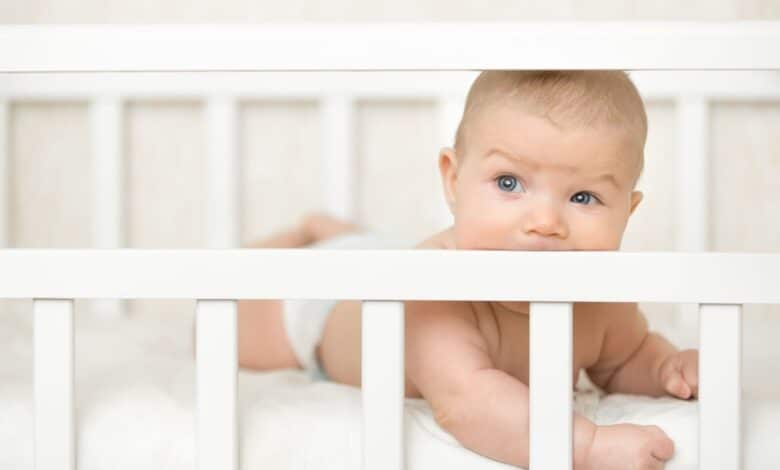
Parents need to be on a watch-out for kids in the crib. Parents need to make sure they know how to keep baby’s legs from getting stuck in crib.
The most effective way to keeps your baby from getting his/her legs stuck in the crib is to ensure that the crib is modern, up to standard, and parent using wearable blanket/sleep sack to prevent their baby’s legs from moving or getting stuck.
The American Association of Pediatrics warns that parents should avoid Crib bumpers and mesh, sleep positioners, and crib tents since it suffocates and may lead to the death of your baby.
Parent! Don’t panic when an issue like this arises. Your baby may have some bruises, but not going to be severely injured or have broken legs. When babies get their legs stuck in a crib, parents should calmly help their little one out of it.
Table of Contents
How To Keep Baby’s Legs From Getting Stuck In a Crib?
Please note that kids-related problems differ from child to child. Every child is unique – what works for my baby may not work for yours. Your solutions to any baby-related problems must be peculiar to that child in some way. To help you achieve that; Here are few ways on how to keep baby’s legs from getting stuck in crib.
#1. Ensure Your Baby crib is up to standard.
The first point of call for your baby’s leg safety is in the crib. You need to pick the right crib your baby is going to sleep in with dexterity.
Having a standard crib is one of the best ways to keep your baby’s leg and arm from getting stuck in the crib. You need to ensure that the crib’s material and designs follow the required safety standard.
You may want to use an old family crib that has been handed down for generations. Please ensure that this crib is made with the right material and designs that meet modern safety standards.
Below are safety standards for cribs as endorsed by Doctors at the AAP.
- The crib slats should be less than 2.38 inches apart, this would be hard for the baby’s arms and legs sticking out of the crib. And more difficult for the baby’s head to get lodged between the rails.
- The paint used should be lead-free. This puts you in a Difficult situation using the old family crib as you don’t know the kind of paint it had.
- The entire cribs should be secured and sturdy tightens with screws and bolts. Check your baby’s crib always as babies can cause a considerable amount of wear and tear on the crib.
- The crib must be free of cutout or regular designs on the slats.
- Parents should not hang clothes or any other materials on the cribs as could lead to suffocation.
The image above is a high standard crib – Dream On Me Carson Classic 3-in-1 Convertible Crib. It comes with a fixed rail/slat design for added security. It is JPMA certified to meet the CPSC safety standards. It is lead/other toxic elements free and confirmed to meet safety standards by ASTM. Available in different colors and you can get it here (See Latest prices and reviews on Amazon ). The price is affordable and won’t put a hole in your pocket. This crib can be converted to a full twin bed. It is very durable and ensures to last for a long time.
#2. Sleep Sack or Wearable Blanket
One benefit of a sleep sack is to keep your baby feeling safe and secure while trying to sleep. It is gentle and comfortable for infants. It is simply ideal for summertime and during the winter, you can combine it with a cotton sleeper to keep your little one warm.
Another advantage of Wearable blankets or Sleep sacks is that they confined your baby’s legs inside the sack or blanket. In other words, their legs are bound within and won’t get stuck between the crib rails.
When you want to pick a sleep sack for your baby, go for the right products. Especially the convertible ones that can be changed as your baby develop to accommodate his current age requirements.
They are Several Option Available and you can get them here (check the recent price and reviews on Amazon), from those that cover both arm and leg to other baby-sized sleeping sacks. The best one will be cozy and secure with the goal that your infant can’t squirm out of it to stick their legs between the crib slats.
Keep in mind that some babies may resist sleeping in a sleep sack because they don’t like being confined in a position when sleeping. However, it worth attempting to keep your baby from getting her legs stuck in a crib.
#3. Move Your Baby To A Playard
You can baby move to Playards if you are stressed over your baby’s leg getting stuck out in the crib slats. An example of a pack and play is the portable playards (check the latest prices and reviews on Amazon). A playard is good for your baby because it doesn’t have slats that your child can get trapped in. There is an adequate amount of ventilation for your child since the sides are made with airy mesh. It is also suitable for babies between the ages of 2- 3 years.
Are sleep positioners safe?
sleep positioners con harm your child, they are not safe according to FDA. In a publication titled (Do Not Use Infant Sleep Positioners Due to the Risk of Suffocation) “The U.S. Food and Drug Administration warned parents not to place infants in sleep positioners. The nest or anti-roll as these products are commonly called cause suffocation (unable to breathe properly) that can lead to death.”
Sleep positioners as the name implies are used by parents to keep their babies from turning too much while sleeping but are potentially dangerous to kids. Like blankets and beddings, sleep positioners can be dangerous for babies when they move and expose themselves to suffocation.
Sleep positioners work either by ‘settling’ the child into a confined position or by putting cushioning on all sides of the child with the goal that they don’t move around in the crib. This may sound great in principle, but has no scientific backing and could cause SIDS (Sudden Infant Death Syndrome) in many circumstances.
The insane part is that a number of these products are sold to decrease the chance of SIDS in a newborn despite that the AAP warned against having any object inside the crib.
Are crib rail covers, Bumper pads, and crib tents, safe?
Product promotions have found a way of convincing parents into buying crib trails, bumpers, and crib tents. But, these products should not be allowed into the baby sleeping area because they are not safe and they are one of the leading causes of SIDS.
The American Academy of Pediatrics (Safe Sleep Recommendations) is particularly solid on its position that nothing should be in the crib where a baby sleeps, especially in the first year of the baby’s life. No matter what the product is intended for nothing should be found in the sleeping space of your baby.
Bumper pads and crib rail covers are often said to shield your infants from injury or protect the crib from early depreciation. There is countless DIY and social media content that show and urge parents to adjust and beautify the crib. All these acts and product conflicts with the AAP safe sleep standards.
Final Thoughts
Your job as a parent is to protect and guard your baby against sustaining injuries that could affect them now or in the future. One of such responsibilities is knowing how to keep baby’s legs from getting stuck in crib
As you have read, there are several things to avoid with regards to keeping your baby’s legs from getting stuck in the crib slats. The guidelines show that you shouldn’t put materials that can suffocate your baby in her crib or cause any other problem.
Like this article? Please share or pin for others to read. You can stay in touch and follow us on Facebook and Pinterest.


